The First Allied Invaders Came From The Sky -- In Gliders
Aero-News D-Day Anniversary Special Report By Kevin R.C.
'Hognose' O'Brien
(This is the first of a three-part series on the Allied
invasion of Nazi-held Europe that began on June 6, 1944. Parts Two
and Three will run Tuesday and Wednesday
--ed.)
Everyone knows D-Day was the 6th of June, 1944. But by the time
the landing craft hit shore at 6:30 in the morning, some Allied
soldiers had already been in action for six hours. The very first
of them came to the left flank of the invasion -- their job was to
seize and hold two bridges over the Orne River and the parallel
Caen Canal, and hold them until the commandos who were landed on
the beach linked up with them.
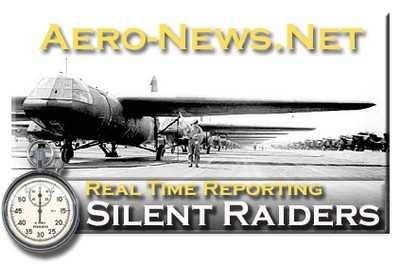
This is the story of those men who came from the sky. They came
in gliders.
Why The Operation?
At 2245 on June 5th, the six gliders and Halifax towplanes for
the first attack of D-day took off from Tarrant Rushton in Dorset,
England. Their goal was to seize two critical bridges that would
let British troops expand their bridgehead, by crash-landing as
close as possible to them right after midnight. Paratroops would
drop shortly afterward, to blow up other bridges that the Germans
would want to use for counterattacks. Then, after daylight, more
gliders would land more troops and equipment nearby. Unlike some
other events on D-Day, this operation went off exactly as
planned.
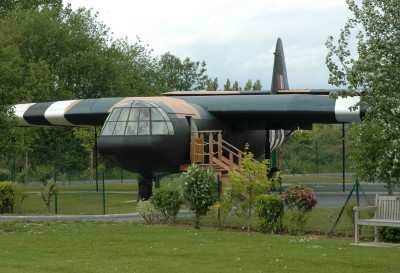
Why A Glider?
Gliders were used by the major powers to deliver airborne troops
from the 1930s until the late forties or fifties (depending on the
nation). During that period they had definite advantages over other
means of airlanding troops, especially parachutes. Paratroopers
were often scattered to the four winds in the act of jumping; it
was normal for their landings to be dispersed, and for there to be
a degree of confusion and delay in assembly. They couldn't take
weapons bigger than those one man could carry safely.
In contrast, gliders landed all the souls on board together,
greatly simplifying assembly. Gliders could carry small cannons and
vehicles; there was even a model that could carry a tank.
Also, a glider was the stealthiest means of delivery at the
time. A glider was very nearly silent, and its towplane could
release it far enough from the intended landing zone that enemy
forces in the zone would not suspect they were under attack. That's
exactly how the Caen Canal and Orne bridge attack took place -- the
gliders were released at altitude, and they flew inland and
approached the bridges from the landward side. The pilots had
nothing to navigate on but compass and stopwatch, but they had
rehearsed the operation thoroughly. All three of the gliders
destined for the canal bridge touched down at the right place; two
of the three gliders got to the Orne bridge (the other
inadvertently landed at, and its soldiers seized, another
bridge).
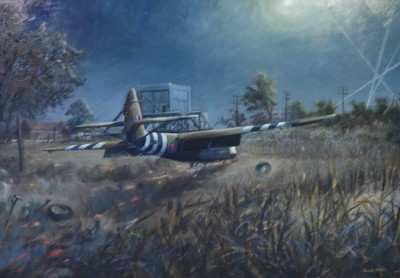
To ensure stealth, the gliders were camouflaged in green and
brown on their upper surfaces, and painted flat black below. They
would be as hard to see as they were to hear. But like every
invasion aircraft, they were painted the night of June 5/6 with
black and white invasion stripes. The stripes were hastily applied
and uneven. "For one thing, we only had one brush per ten gliders,"
one of the pilots recalled. The purpose of these stripes was the
exact opposite of the purpose of the camouflage -- by making Allied
machines conspicuous, the organizers hoped to avoid the terrible
friendly fire incidents that had befallen the airborne forces
during the invasion of Sicily the year before. One paint job
contradicted the other, but no one ever said the military was
consistent.
Flying a Glider
Combat glider flying was a challenging profession. While some
gliders would be picked up by flying towplanes, much like an aerial
advertiser snatches his banner today, for D-Day most of the heavily
laden gliders were aero-towed from a runway. The towrope -- hemp in
those days, and well over an inch thick -- was laid out in S-rolls
next to the aircraft. The towplane taxied forward until all the
towrope was paid out and then when the line was taut, began to
accelerate. The glider, even a heavily laden Horsa, took off first
-- just like a modern sailplane behind its towplane. Until the
towplane was up, the pilot was then flying in an imaginary box. Too
low and he struck the runway --too high and he could lift the tail
of the towplane with catastrophic results.
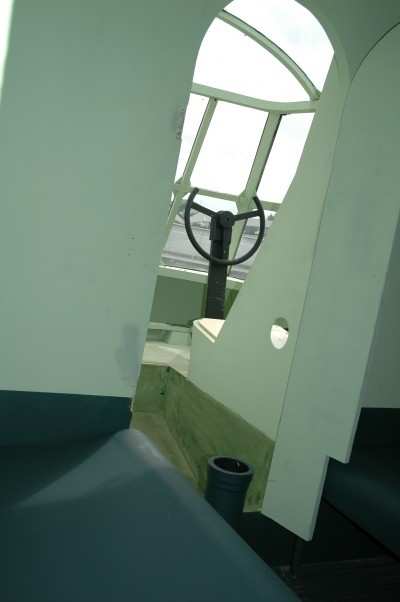
Two pilots manned each Horsa. They belonged to the Army's Glider
Pilot Regiment, and would fight as infantry until they could be
recovered. Unlike American glider pilots, who learned to fly in
gliders from the beginning, most of the Britons had extensive time
on piston trainers like the Tiger Moth or Miles Magister, and
sometimes other powered aircraft.
The most common towplanes were Douglas DC-3s -- Dakotas, in
British service -- although the British also used retired bombers
like the Armstrong-Whitworth Whitley and the Handley-Page
Halifax.
The Horsa was equipped with an instrument that showed the pilot
the angle of the tow cable -- a strange looking instrument that
would never be used again after the big British gliders were
retired.
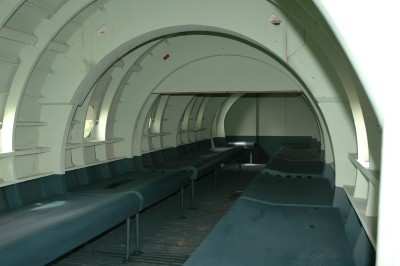
The air invasion was every bit as choreographed as the sea
attack, and the glider tows had specific places to form up. In
general, the tows got funneled together as they went further south
over England. Then the pilots had to bear the long flight over the
Channel, knowing that if they came loose from their towplane, their
situation was hopeless. Over German-held France, the shelling
began, as 88-, 105- and even 128-mm antiaircraft guns reached out,
under radar control, for the unarmed towplanes and the plywood
gliders. Then, the gliders were cut free and turned to the north,
then to the west. They were on time, on altitude. The moon was out
and they could see the silvery water where the Germans had flooded
low-lying areas -- a few roads, and these two bridges, were the
only way that Monty's British units would get off the beach.
 ANN's Daily Aero-Linx (05.06.25)
ANN's Daily Aero-Linx (05.06.25) ANN's Daily Aero-Term (05.06.25): Ultrahigh Frequency (UHF)
ANN's Daily Aero-Term (05.06.25): Ultrahigh Frequency (UHF) ANN FAQ: Q&A 101
ANN FAQ: Q&A 101 Classic Aero-TV: Virtual Reality Painting--PPG Leverages Technology for Training
Classic Aero-TV: Virtual Reality Painting--PPG Leverages Technology for Training Airborne 05.02.25: Joby Crewed Milestone, Diamond Club, Canadian Pilot Insurance
Airborne 05.02.25: Joby Crewed Milestone, Diamond Club, Canadian Pilot Insurance







